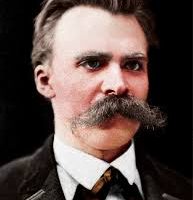I was search for some of the African times that are attractive to tourists or where the tourism industry has grown in the last few years. For my purpose, I chose the four main African cities listed under the title of best places to visit in Africa. The full list comprises some 20 African cities and venues for tourism while the four leading cities include Cape Town, Johannesburg, Marrakech and Nairobi. The Ethiopian capital Addis Ababa is also mentioned on the list of must visit African cities.
Addis Ababa has also great potentials as a tourism destination or a place to visit such a status, the Ethiopian capital has also the potential to be listed among the top four tourist destination cities. Yet in order to attain this status, Addis Ababa needs to be massively promoted, popularized or advertised in the global tourism market, among foreign tourists or institutions dealing with advancing the cause of tourism in Africa biggest or historic cities.
City planners in Addis Ababa should therefore learn from other African cities that are mentioned as leading tourist destinations. The city planners should also include into the reconstruction of Addis features that are found in other big African cities. They can for instance include the construction of bigger zoos that would give visitors the opportunity to see some of Ethiopia’s endemic wild animals like the Mountain Nyala and others. Big museums need to be built at strategic places around Addis Ababa in order to include in their collections the major collections that reflect Addis Ababa image as a capital of a multiethnic country and as the centre of African cultures and traditions. Addis Ababa has also the potential for being the centre of African culture in general.
Cape Town is considered the second most popular tourist destination in Africa with 1.6 million tourists the city in 2014. Cape Town is a port city on South Africa’s southwest coast, on a peninsula beneath the imposing Table Mountain. Slowly rotating cable cars to the mountain’s flat top from which there are sweeping views of the city, the busy harbor and boats heading for Robben Island, the notorious prison that once held Nelson Mandela which is now a living museum.
Johannesburg is South Africa’s biggest city and capital of Gauteng province. It began as a 19th-century gold mining settlement. Its sprawling Soweto Township was once home to Nelson Mandela and Desmond Tutu. Mandela’s former residence. It is now the Mandela House museum.
Marrakesh is a former imperial city in the western Morocco. It is a former economic centre and home to mosques, palaces and gardens. The medina is a densely packed walled medieval city dating to the Berber empire with mazelike alleys where souks thrive or market places sell traditional textiles, pottery and jewelry. A symbol of the city and visible for miles is the Moorish minaret of 12th century Koutoubia Mosque.
Nairobi is Kenya’s capital city. In addition to its urban core, the city has the Nairobi National Park, a large game reserve known for breeding endangered black rhinos, and home of giraffes, zebras and lions. Next to it is a well-regarded elephant orphanage operated by the David Sheldrick Wildlife Trust. Nairobi is also often used as a jumping-off point for Safari trips elsewhere in Kenya.
Is Addis Ababa a potential candidate to claim the top spot as an African capital city worthy of visits by foreign tourists? The answer is a definitive yes. Addis Ababa shares similarities and differences with the other African capitals selected as tourist destinations or places worth visiting. One of the similarities is that Addis is a city under construction and reconstruction while that it is home to various tourism sites and historical landmarks. Contrary to many other African capital cities, Addis Ababa was built not as a colonial outpost but as an independently and autonomously evolving African capital city that is absorbing both local traditions and cultures as well as global heritages of some of the biggest metropolises.
There are many capital cities in Africa known for their touristic attractions and as centers of traditional and cultural exchanges among the various tribes and ethnic groups. Dakar, the capital of Senegal; Brazzaville, the capital of Congo; Cairo or the capital of Egypt, and Addis Ababa, the capital of Ethiopia are a few of the culturally most dynamic, diverse, and vibrant capital cities in the continent. The reason why Addis Ababa enjoys such a status is clear to identify. It is one of the historic cities in Africa where Indian and Italian as well as Islamic architectures are the main features that reflect its global heritages. The modernization of Addis Ababa should therefore take into consideration these heritages, and the process of rebuilding the city should take these concerns into consideration. The ongoing demolition of some of the oldest neighborhoods in the capital should take into consideration the need for carefully preserving historical relics that may one day be used to show the various stages of growth that the city has passed in order to attain its present status as a modern African metropolis.
The Ethiopian capital is not only famous for its diverse traditions and cultures that result from a long historic process of inter-human connections. One of the most important features that make Addis Ababa such an important city is the historic process that led to the convergence people from different ethnic groups that were driven or attracted to Addis for various reasons.
War may be one of the reasons and an important factor that brought people from other ethnic groups from the centre and the south of the old empire during the Battle of Adwa against Italian invaders who brought many irregular army detachments to Addis and to the northern parts of the country where the resistance was most active. Through time, this has led to the amalgamation of different ethnic groups whose members settled sporadically and interacted with the local populations in order to create big and small towns that bear the marks of past demographic interactions and cultural and traditional features.
Addis Ababa is fast becoming the most important African metropolis not only economically but also diplomatically and culturally. Addis is the melting pot of Ethiopia’s diverse cultures and languages. It is also what we may call, “little Ethiopia” or “Ethiopia in miniature”. All the traditions, cultures and languages of the eighty plus ethnic groups are represented in Addis Ababa. There are even neighborhoods in Addis known for serving as residential areas of specific ethnic groups. Mercato or one of the biggest markets in Ethiopia is known for serving as the place of residence and work for the Gurage ethnic group famous for their hard work, diligence and economic acumen in general.
The Dorze ethnic group from the south of the country, also known for their artistic abilities and craftsmanship are concentrated in the northern part of Addis, a place popularly called “Shiro Meda”, a name probably inspired by the reddish soil similar to the color of one of the traditional dishes made of crushed beans or peas. Shiro Meda is home to some of the best traditional dressmaking in the country. People from the Dorze ethnic group are famous for their colorful dressmaking abilities. That was the site for the largest marketplace for traditionally woven men’s and women’s wears that have become fashionable. Modernized, expensive and enjoying a great demand these days.
People from the northern part of Ethiopia, from the Amhara and Tigray ethnic groups are known for their business acumen, similar to the famous or infamous American carpetbaggers who travelled from Northern US to the South seeking commercial opportunities following the American Civil War. The early travelers from northern to central Ethiopia were likewise tradesmen who specialized in taking staple crops like wheat and teff to the south and central Ethiopia and bring products like salt, coffee and other industrial goods to the rural north thereby facilitating exchanges between the two areas.
The commercial exchanges that started a long time ago have in turn served as catalysts for the intertwining of traditions and cultures among the people coming from southern and northern Ethiopia. Marriages and other cross-cultural interactions have cemented the peaceful coexistence and interactions of people from the respective ethnic groups through long-term intermarriages.
Addis Ababa is also home to people who are the products of these kinds of intermarriages among different ethnic groups. It is also a capital city where all members of the different ethnic groups have contributed to making it a truly national capital city where tradition and modernity continue to coexist not in an atmosphere of competition but one of complementariness. This is also one of the characteristics that have made Addis a vibrant and modern African capital city.
BY MULUGETA GUDETA
The Ethiopian Herald September 22/2024




